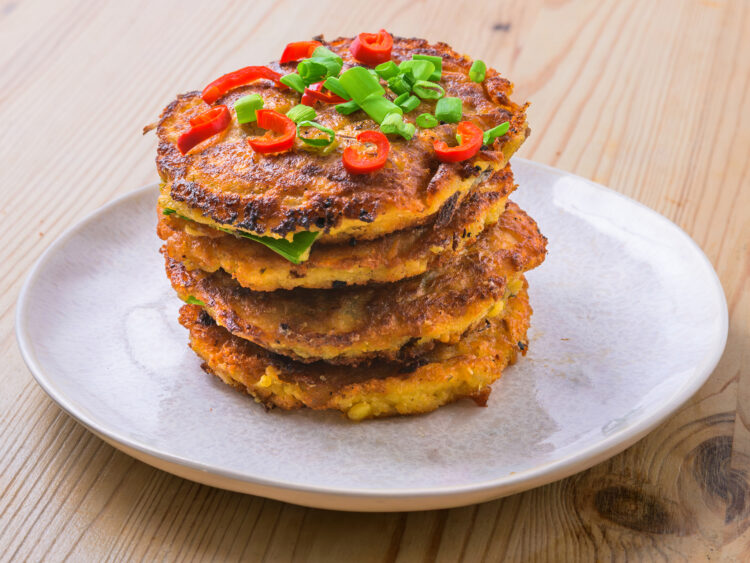These crispy Korean pancakes combine mung beans, sauteed pork, and kimchi for big, bold flavor.
Since the Korean War, rural cooks have relied on locally grown mung beans, which need no milling and pack more protein than polished rice. The inimitable sizzle still draws lines of regulars and tourists under neon awnings, from Jeonju to Sokcho. Many chase each bite with a sip of cloudy, gently sweet makgeolli.
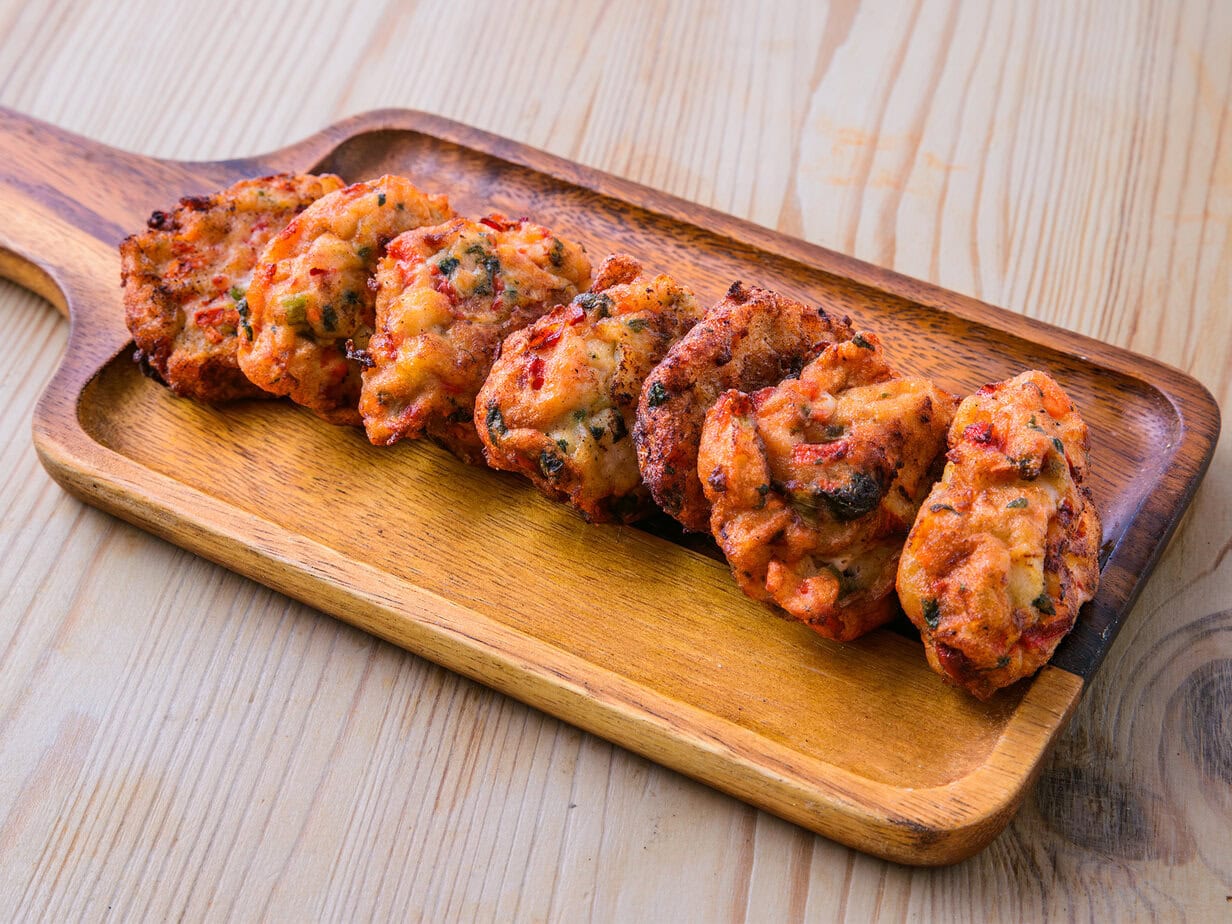
Key ingredients for bindaetteok
The base batter is little more than a blend of soaked mung beans, water, and a pinch of salt. Yet once peeled and ground to a coarse meal, these legumes deliver earthy depth and a protein boost that belies their modest price.
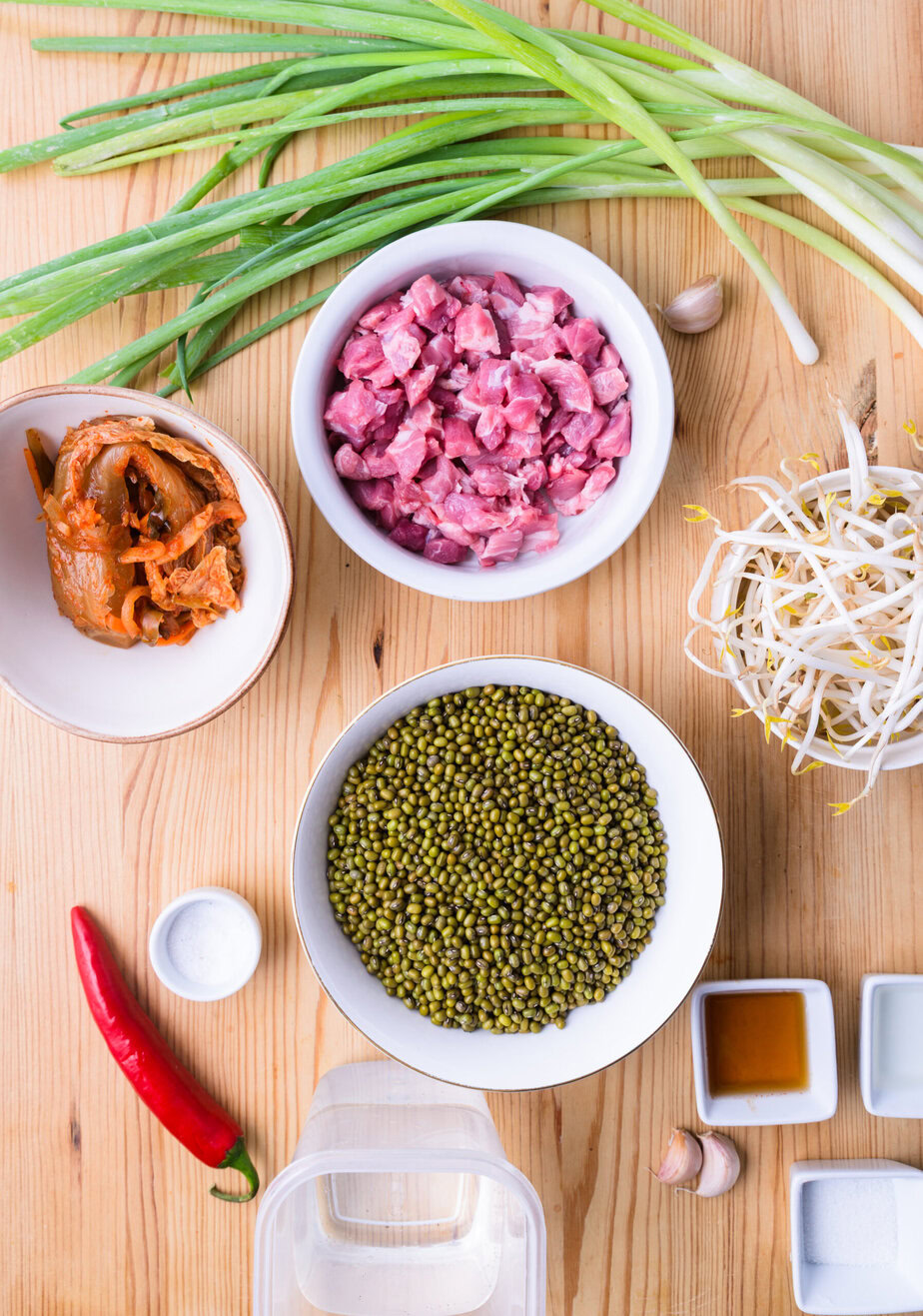
Diced pork shoulder adds caramelized richness, tangy kimchi brings a fermented fizz, soybean sprouts and dried bracken add vegetal crunch, and lengths of scallion perfume every bite.
What makes a true bindae-tteok?
Purists swear by beans ground on a granite millstone and avoid wheat flour to keep it gluten-free, though some fold in a spoonful of rice flour or starch for extra binding. Regional or family pride fuels friendly spats : some modern vendors add raw oysters for briny pops, while northern cooks often keep the filling to the bare minimum ; kimchi, however, almost always makes it into the pan.
It is part of the Korean cuisine category of buchimgae, a family of dishes presented as pancakes.
Today’s vegan stalls swap pork for smoked shiitakes, but seasoned fry cooks swear that the faintly savory note of rendered pork fat is what browns the edges evenly.
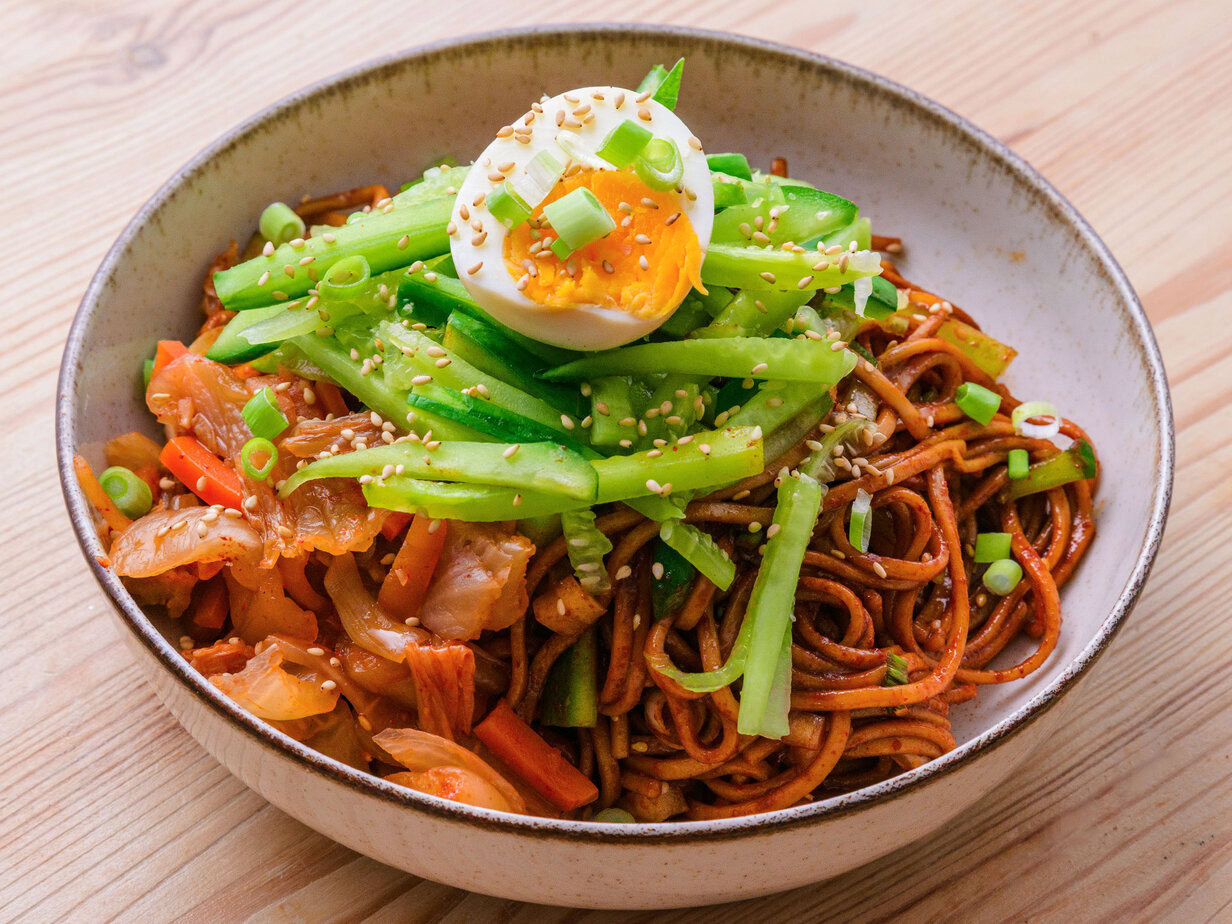
Tips for perfect bindaetteok at home
Make the batter ahead
For best results, make the batter a day ahead. Soak the beans until their thin, papery skins slip off easily. The next day, puree them with water, leaving some visible bits for texture.
Adjust the batter to your preferred texture
For a lighter batter, stir in a splash of ice-cold water before cooking. If you prefer firmer, sturdier pancakes, increase the amount of batter relative to the filling to keep the soybean sprouts or kimchi from breaking the pancake apart as it cooks.
Get a market-worthy finish
To mimic the texture and crunch of market pancakes, finish in slightly hotter oil, pressing gently so every ridge turns perfectly golden and crisp.
Freezing bindaetteok
Par-cook the disks in advance and freeze them. They will crisp back up after about five minutes per side in a lightly oiled skillet.
Quick dipping sauce: Mix two parts soy sauce with one part vinegar, then sprinkle with gochugaru for the classic dip.
Serving, pairings, and where to enjoy it
At home, stack the pancakes in a shallow bamboo basket, garnish with slivered scallion tips and thin rings of scarlet chile, then let your guests help themselves while they still glisten with oil.
A well-chilled bowl of makgeolli nicely echoes the acidity of the batter ; a citrusy IPA is an easy pairing.
In Seoul, head to stall 65 (Soon-Hee Bindaetteok) at the Gwangjang Market : the staff say they sell more than a thousand pancakes on busy weekends. Leftovers crumble wonderfully into kimchi fried rice, or tuck them into lettuce leaves with ssamjang samgyeopsal-style for an improvised picnic.
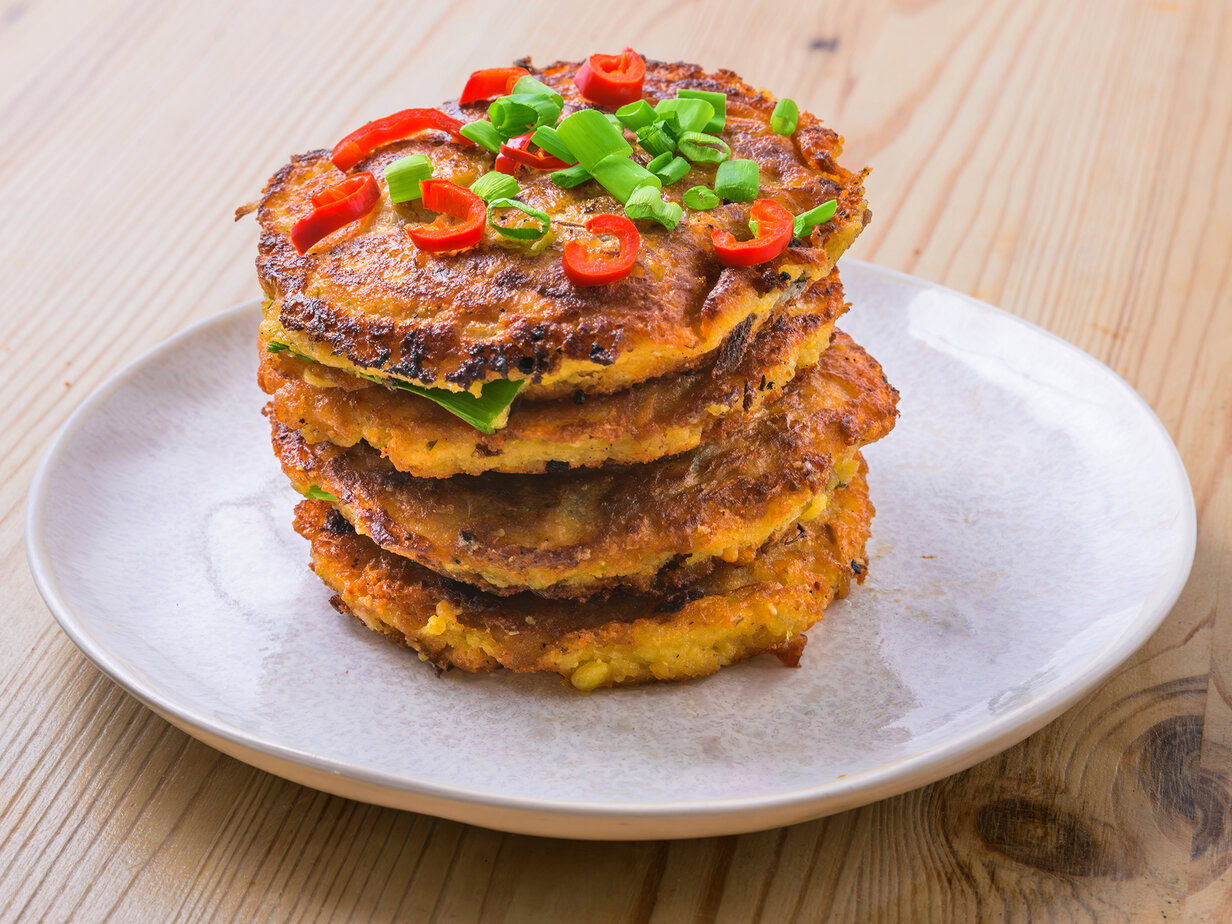
Authentic Bindaetteok – Korean Mung Bean Pancakes
Ingredients
Batter
- 650 g mung beans dry weight, soaked and peeled
- 360 ml of water
- 1 teaspoon of fleur de sel
Pork marinade
- 0.5 tablespoon of garlic minced
- 1 tablespoon of mirin
- 0.5 tablespoon of sugar
- 1 teaspoon of fish sauce
Garnish
- 180 g of pork shoulder diced
- 180 g of kimchi well-drained and finely chopped
- 120 g of soybean sprouts blanched and drained
- 120 g of bracken cut into pieces, optional
- 10 stalks of green onions cut into 4 cm lengths
- 0.5 tablespoon of garlic minced
- 6 green onion tops
Finishing & cooking
- 1 red chili pepper sliced
- of vegetable oil for frying
Instructions
Prepare the mung beans
- Rinse the dried mung beans, cover with water, and refrigerate for 6 hours.650 g mung beans, 360 ml of water
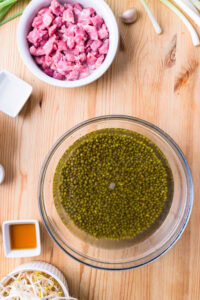
- Rub the soaked beans between your palms to loosen the skins, then rinse and drain several times until all the hulls are gone.
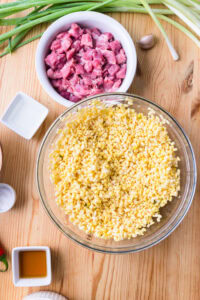
- Drain the soaked, peeled mung beans.
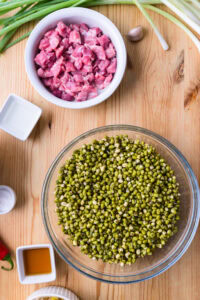
Prepare the pork
- Combine the diced pork with the garlic, mirin, sugar, and fish sauce.180 g of pork shoulder, 0.5 tablespoon of garlic, 1 tablespoon of mirin, 0.5 tablespoon of sugar, 1 teaspoon of fish sauce
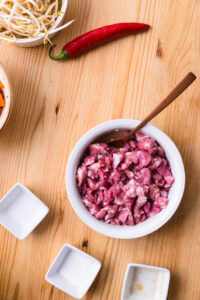
- Sear the seasoned pork in a hot pan until cooked through; set aside.
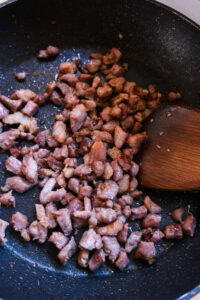
Prepare the vegetables
- Slice the kimchi into 3 × 1 cm strips.180 g of kimchi
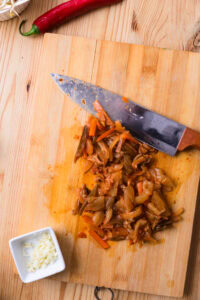
- Blanch the soybean sprouts in salted boiling water for 30 seconds, plunge into cold water, then drain.120 g of soybean sprouts
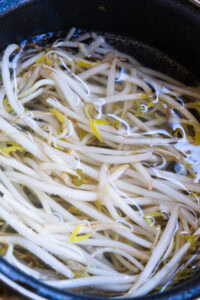
- Cut the bracken into 4 cm pieces.120 g of bracken
- Cut the scallions into 4 cm pieces, reserving a few green tips for garnish.10 stalks of green onions
- Slice the red chili pepper.1 red chili pepper
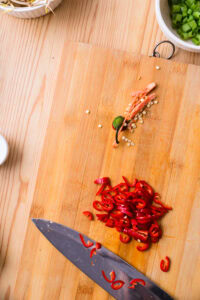
Make the batter
- Pulse a handful of soaked mung beans briefly, then reserve for extra crunch.
- Blend the remaining mung beans with the water and fleur de sel until you have a slightly coarse paste.1 teaspoon of fleur de sel
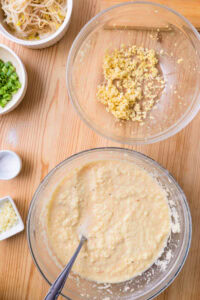
- Transfer the paste to a large bowl. Add the kimchi, bracken, soybean sprouts, green onions, garlic, and sautéed pork; mix well.0.5 tablespoon of garlic
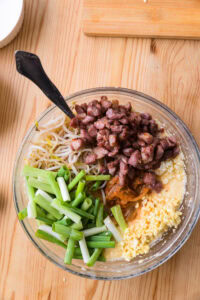
Cook the pancakes
- Heat a skillet over medium heat and add a little oil.of vegetable oil
- Lay a few red-chili slices and reserved green-onion tips in the hot oil.6 green onion tops
- Spoon in enough batter to form a thick pancake and cook until the underside is golden.
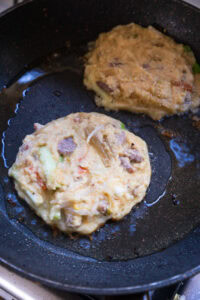
- Carefully flip and cook the other side until golden and crisp.
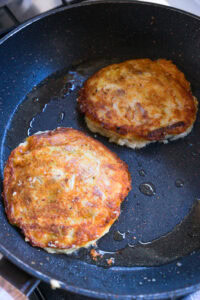
- Repeat with the remaining batter. Serve the pancakes piping hot.
Notes
Culinary sources
• Bindaetteok goes round and round – This Is Korea Tours (English)
• Bindaetteok – Encyclopedia of Korean Culture (Korean)
• Korean Home Cooking: Recipes for Longevity – J. Paul Getty Museum (English)
• Why is bindaetteok called “tteok” and not “jeon”? – SisaIN (Korean)
• Bindaetteok, a popular snack of the modern era – Region N Culture (Korean)
• Bindaetteok, a dish of nostalgia and romance – Koreana (Korean)
• Mung bean pancake (Bindaetteok) – VISITKOREA (English)
• Make a crispy, tasty bindaetteok – 10,000 Recipes (Korean)
• Bindaetteok – mung bean pancake – Kimchimari (English)
• [Saongwon] Mung bean bindaetteok (2 pieces) – WingEat (Korean)
• North Korean-style bindaetteok – TikTok (Korean)
• Soul-warming bindaetteok: fried mung bean pancake – Instagram (English)
• Gorgeous vegan bindaetteok: Korean mung bean pancakes – The Korean Vegan (English)
• Jeju-do bindaetteok: buckwheat pancake stuffed with radish – Pinterest (English)
